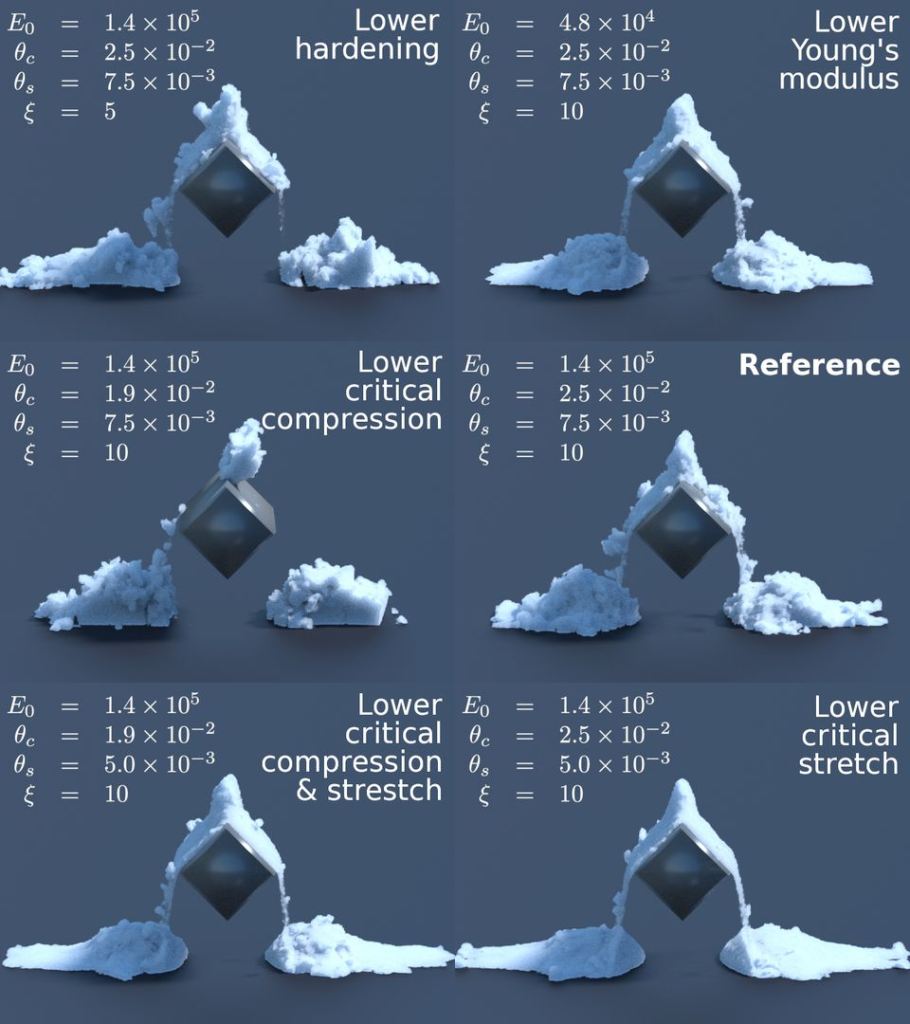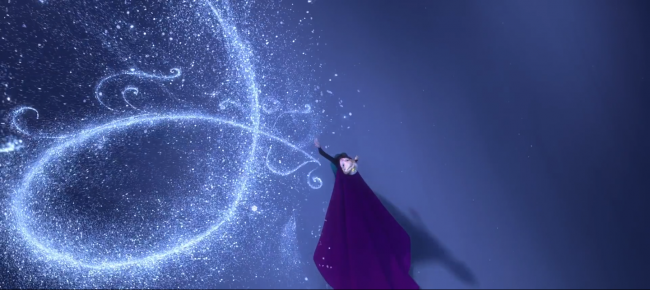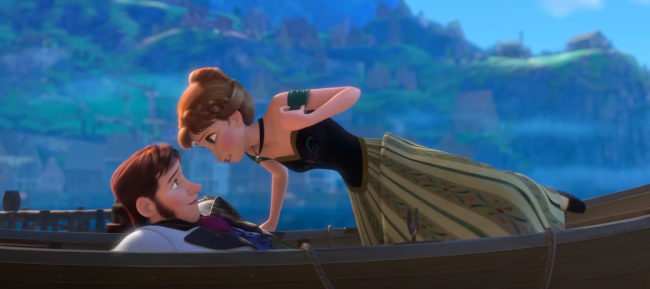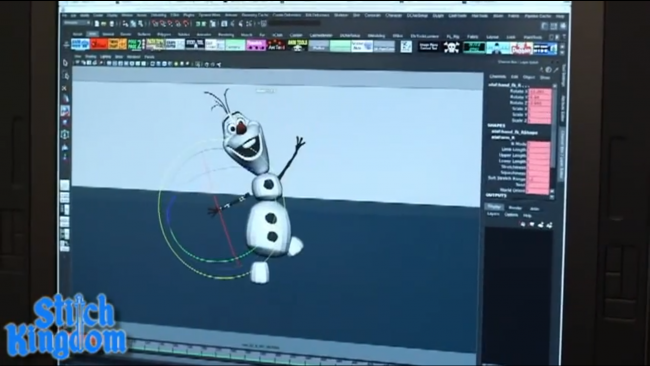But Disney it’s Cold Outside
On Oct.28th, ASIFA-East members had the exclusive chance to attend a Times Square screening of Frozen and a post-screening discussion with co-directors Chris Buck and Jennifer Lee, producer Peter Del Vecho and songwriters Kristen Anderson-Lopez and Robert Lopez.
After a variety of teasers, deceptive trailers, and the infamous ‘Lino DiSalvo doesn’t understand women’ scandal, the story of Frozen clicked into place. When I was young, I had “The Snow Queen & Other Tales” on tape with a picture book, so I was familiar with Hans Christian Andersen’s story of a boy corrupted and spirited away to the icy north by a fairy queen, and the sister who has to save him. In Disney’s Frozen, our heroine Princess Ana (Kristen Bell) has to save their kingdom from her misunderstood magical sister Princess Elsa (Idina Menzel), with the help of a bumbling snowman Olaf (Josh Gad) and bumbling dude Kristoff (Jonathan Groff). Walt Disney himself first tried to get this project off the ground in the 1940s (I have 1948 written down but the LA Times says 1943). It took several rewrites and rehires to take it from an animated MGM title sequence to the stereoscopic 3d CGI musical it is today.
A few people have made the argument that Disney was somehow further disenfranchising women by rewriting the backstory of the Danish fairy tale’s heroine, but I see now that it’s easy to get carried away with criticisms even before seeing the entire film. There are many ways to analyze the importance of a heroine saving her brother vs a heroine saving her sister. Frozen‘s story and songs provide updated lessons-of-the-heart to the girls of today, girls who have actually been raised on decades of Disney’s unique princess culture. The film is self-aware as it reverses some of these effects, and assuages with modern feminist touches, perhaps because of Disney’s first female director, Jennifer Lee. Where princesses’ once simply married up-and-out of their troubles, (Snow White, Sleeping Beauty, Cinderella) the princesses of the last two decades have progressively become more independent and comfortable being single, (Ariel, Mulan, Tiana). At least for a while longer before they marry, because finding true love will always be an important part of a Disney movie. Somewhere in the last ten years Disney Princesses have picked up a stigma of being “too pink” and weak for proper role models (remember how they redesigned Merida to fit into the Princess-club), and I feel that Frozen is at least taking responsibility for the narratives it tells (and aggressively markets) to young children.
Personally, I now dismiss the controversy over Lino DiSalvo’s (the head of animation) P.R. disaster, [“Historically speaking, animating female characters are really, really difficult, because they have to go through these range of emotions, but you have to keep them pretty and they’re very sensitive to — you can get them off a model very quickly.” – DiSalvo] as something he shouldn’t have said because maybe he was too tired from working really hard on multiple Broadway-worthy duets. Compared to other popular mainstream movies that address how teen girls should use their special powers (exempli gratia Twilight), Frozen has a different message of the feminine role in love. Just as Emma learns in “Once Upon a Time” (in Disney’ other property on ABC) Frozen teaches us that there is more than one way to use the power of true love’s kiss.
Co-director Chris Buck told us after the screening that they ‘drew on the past and pushed the crew,’ but I was actually feeling the pull of many millennial sources. Glee and American Idol have been setting the stage for powerful “Defying Gravity” moments for years. And there has been enough hideously embarrassing humor generated by The Office and Tina Fey’s 30 Rock to set up Ana’s awkward introduction to the handsome Prince Hans. In a short but sweet slapstick scene involving a horse and a perilously balanced rowboat, Ana manages to meet, greet, fall on, grope, and call-herself-out in front of a sexy man, all in the space of a few minutes. Compare this to Princess Aurora meeting the perfect stranger in a forest 54 years ago, and it would be hard to imagine these two princesses being very close friends. Disney has a good grasp of what young adults feel today, reaching a broad core of ironic and sentimental audiences. <SPOILER> Although, I did find the suppression of Elsa’s magical powers by her parents to be creepy to a psychoanalytical degree, seeing such mental anguish rendered in song (“Keep it inside, repress all my feeeeeelings la la la”) makes me wonder what problems today’s children are actually wrestling with.</SPOILER>
The directors and musicians urge you to think of snow itself as a character in the movie. In order to capture the essence of a winter environment, Disney sent their animators to walk in snowdrifts. Imagine men and women wandering around Wyoming, shivering in piles of snow 3 feet high…all of them wearing dresses. A new software particle simulator called Matterhorn was created that allowed the CGI characters interact with the virtual snow in ways that were unknown, and even unavailable to Disney itself in the beginning of production. Be sure to click the aforementioned link for SIGGRAPH’s inside look at the new “snow simulation method utilizing a user-controllable elasto-plastic constitutive model integrated with a hybrid Eulerian/Lagrangian Material Point Method.” 😀 <SPOILER> What ever they did, it works. In one of the climatic battle scenes, Prince Hans battles a snow giant and cuts it leg off. Hurling himself forward, Hans barely makes it onto a crystal staircase before it shatters into the abyss. I have not experienced such a thrill in a Disney movie since Prince Phillip’s battle with the dragon in Sleeping Beauty. </SPOILER>

Snow math (Image from CGMeetup)
In addition to the feature Frozen, Disney also gave us a short film before hand called “Get A Horse!” Mickey and Minnie Mouse return in a jaunty black-and-white film, animated in rubber-hose style. A lot of the gags had emphasis on sexiness and violence, and while Tom Strathe’s Cartoon Carnival has taught me to expect such jokes in these films, we can get away with so much more 80 years after the Hayes code… Old timey cows shake their voluminous udders, and the bad guys who kidnap Minnie get pitchforks up the ass. Mickey and Minnie are admirable for their undying love, but I wonder at what point are they just sadistic jerks? At any rate (29.7 fps) there is brilliant use of the 2d screen compared to the 3d/stereoscopic CGI environment. Gags involving flip books and film editing itself abound, and make it a lovable short for the animation industry.

(image from Animation World Network)
It’s slightly amazing that Frozen already has a lot of information about it’s production history documented online. The wiki is chock full of tidbits, such as Frozen‘s art director Michael Giaimo being inspired by Black Narcissus, and there are fascinating behind-the-scenes looks at animation. Josh Gad just gave an interview to i09. But I would suggest putting down whatever you already know about Frozen, and take your family and friends to experience it on the big screen. Hopefully they will come out of the theater with a new appreciation for Disney princesses, and this generation of kids will gain their own moments of wonder equal to our parent’s appreciation of Cinderella’s miraculous transformation. Happy Holidays everyone!
Frozen will be theatrically released on Nov 27th, 2013, nationwide.










